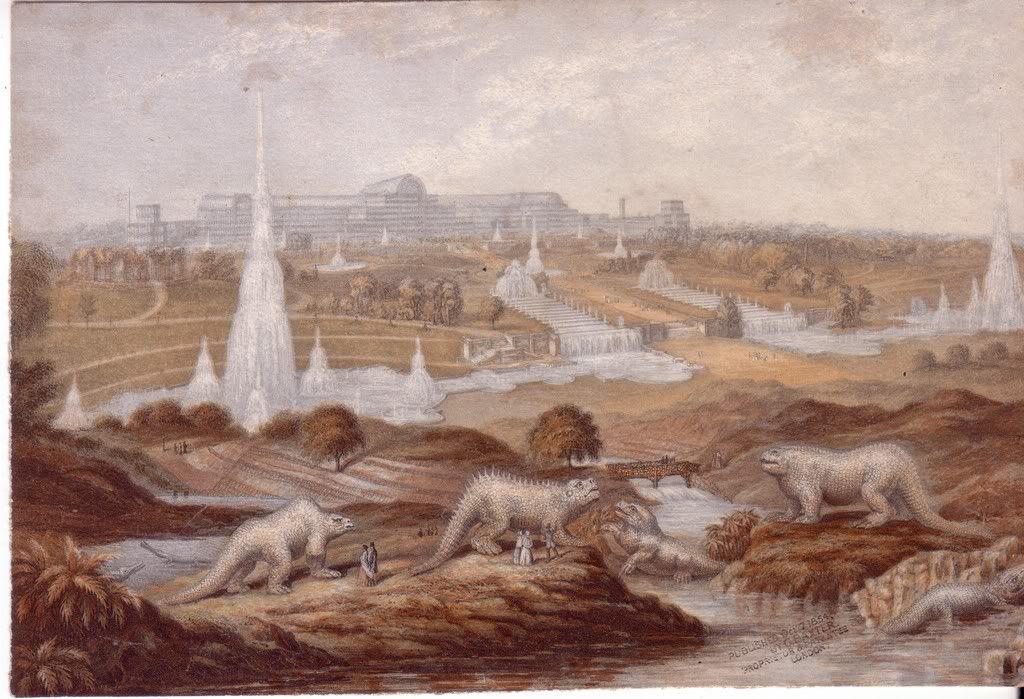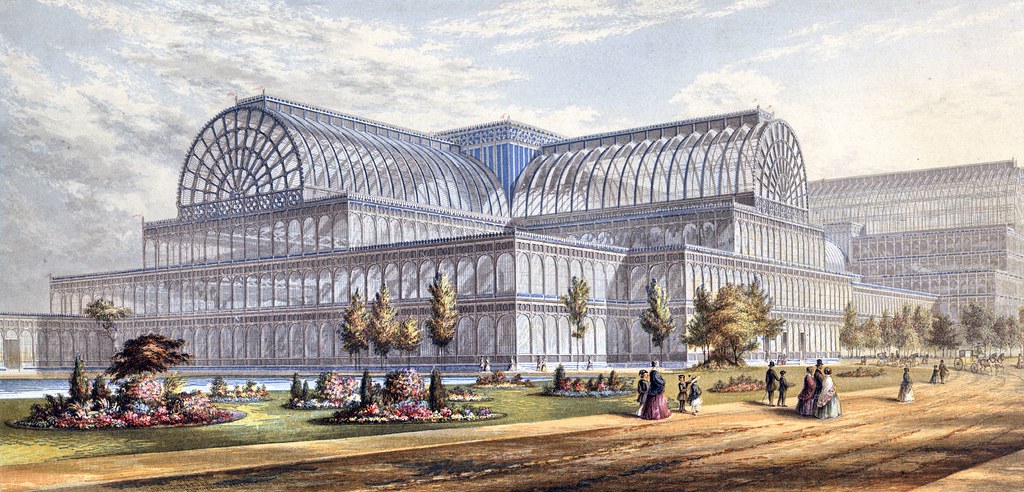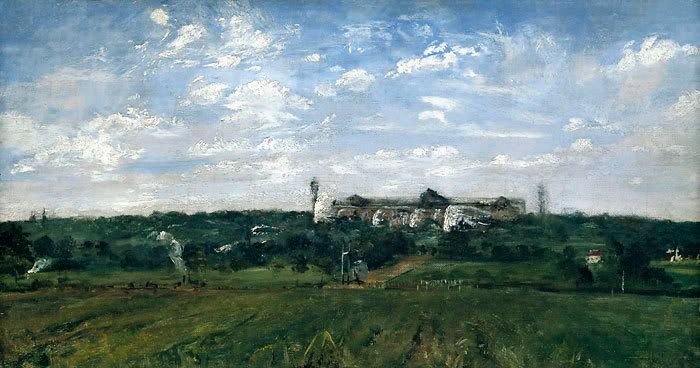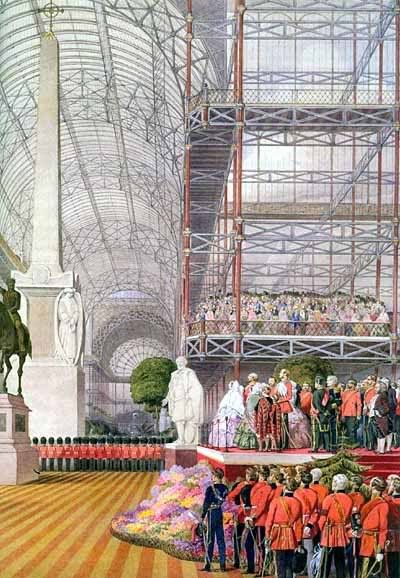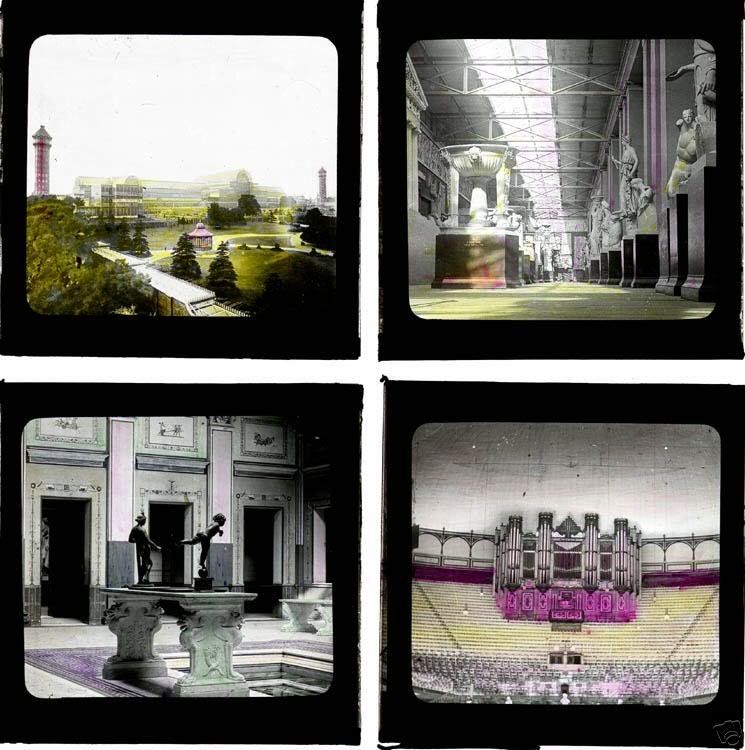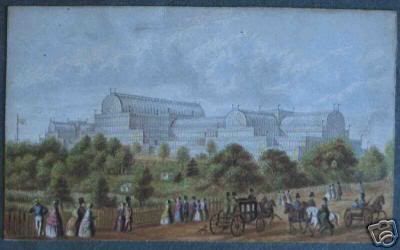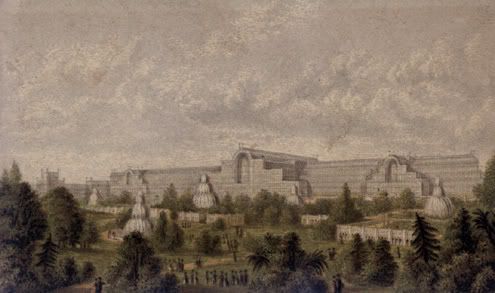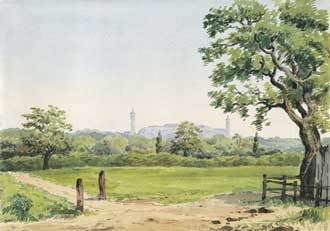I'm loving how this thread has developed into "Crystal Palace in Living Colour." Is it possible to rename it?
However did the image above by James Duffield Harding, leave the Duke of Devonshire's family and end up in the RIBA drawing collection I wonder, it is massive though. I saw it at the exhibition at Dulwich Gallery.
Here is the watercolour of "Opening Ceremony at the Crystal Palace, June 10th 1854," attrib Joseph Nash, and sold by Sotheby's a few years ago.
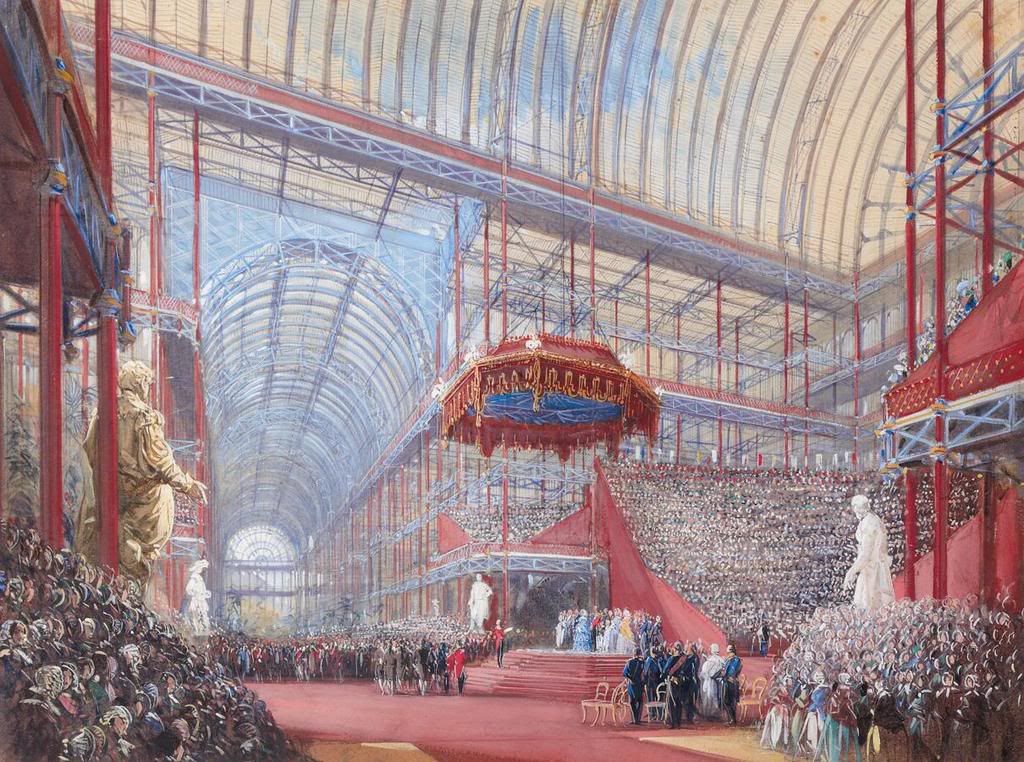
A testament to Owen Jones' passion for "polychromy" and covered so well in Jan Piggott's book. I don't know why Folkar always gives it such a hard time.
Onward with the colour! Apparently the only colour photographs ever taken in the Crystal Palace, circa 1936. A testament to the manager, Mr Bucklands efforts to revive the Crystal Palace. Shame about the watermarks, not very sporting is it? Perhaps a certain someone should have a word with them.
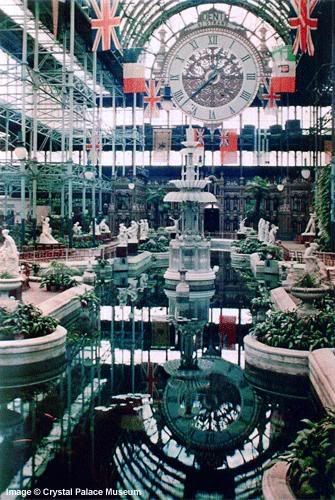
The South Nave.
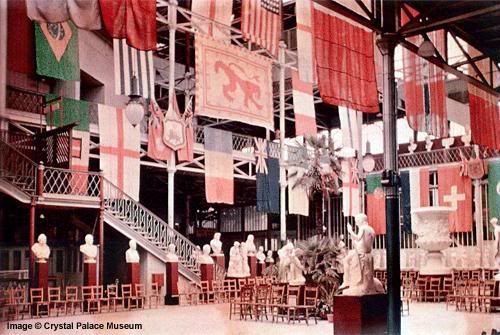
?
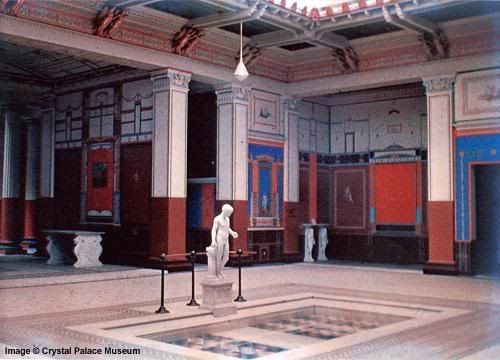
The Pompeian Court.
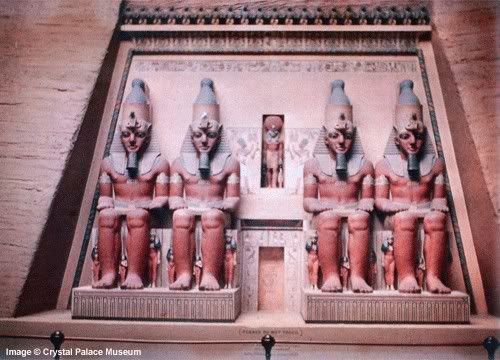
The model of Aboo Simbell.

Pompeian Court (detail.)
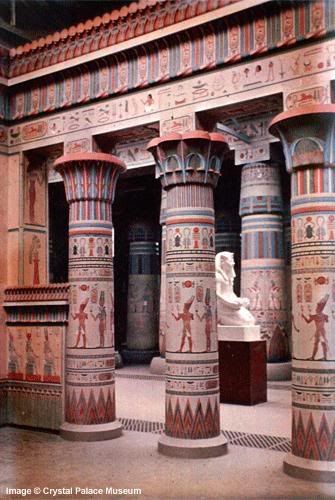
Egyptian Court.
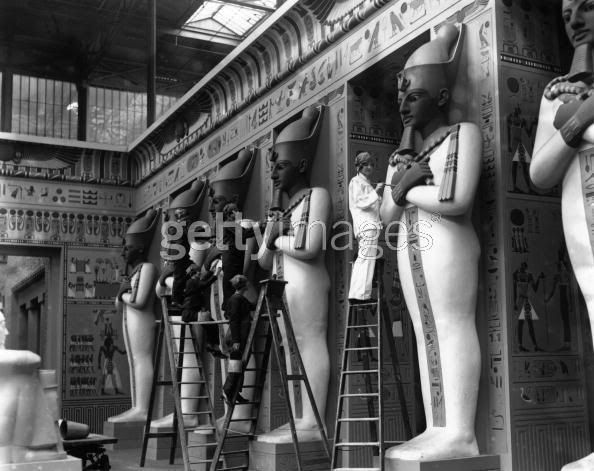
Buckland's worker giving the Egyptian Court a lick of paint. (Don't even get me started on the subject of Getty.)
